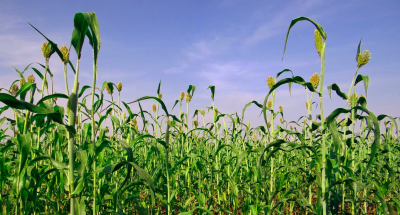
The variability of monsoon rains due to climate change affects Marathwada and Vidarbha regions the most, says a district level study
India is ranked 6th in the list of countries most vulnerable to climate change, according to Global Climate Risk Index and it is evident from the frequent occurrence of extreme weather events like floods, cyclones and droughts. Climate change affects the monsoon rains that drive agriculture in India. Though many studies have tried to assess the impact of climate change at a regional level, the policies based on such studies fail to address the grievances of agriculture and farming sector at smaller, district levels. In a new study, researchers from the Indian Institute of Technology Bombay (IIT Bombay) have investigated the impact of climate change on agriculture in the districts of Maharashtra.
The seasonal monsoon winds, blowing from the south-west and the north-east directions, are moisture-laden and bring in the yearly monsoon rains. These rains are critical to almost 60% of India’s rain-fed agriculture and the timely arrival and adequacy of monsoon winds plays a vital role in our farming practices. These winds vary across seasons, across years and also across decades, and this variation is commonly known as monsoon variability.
The study, published in the journal Science of the Total Environment, has tried to understand monsoon variability in the context of the changing climate. The study analysed daily rainfall data collected from 34 districts of Maharashtra for 62 years between 1951 and 2013. It took into account the increase in the number of consecutive days with no rainfall (dry spells) and a decrease in the successive days where rainfall exceeded the minimum required amount (wet spells) during this period. It also noted the fluctuations in the daily rainfall patterns; including extreme rainfall events, characterised by heavy and very heavy rainfall.
Based on these data points, the researchers calculated a ‘monsoon variability index’ for each of the districts studied. “The study tries to understand how monsoon variability indices are impacting the productivity of major crops in the highly vulnerable districts of Maharashtra. The methods used in this study can be adopted by administrative units across the world”, says Prof. Devanathan Parthasarathy from IIT Bombay, who led the study.
The researchers found that all the districts considered in the study had an increase in the number of dry spells over the years. However, they observed significant differences in other monsoon variability indicators like extreme rainfall events, the number of wet spells and the fluctuations of the rain pattern.
The researchers then ranked the districts based on the monsoon variability index and found that the regions of Vidarbha and Marathwada were most vulnerable to climate change. It is of little surprise that these two regions also have the highest farmer suicides in the state. The researchers point out that monsoon variability leads to a reduction in the average yield of crops and crop failures.
“Lack of irrigation facilities, climate variability, inefficient agricultural markets, and low awareness of government schemes or programs are the other major reasons for low productivity in these regions”, remarks Ms Deepika Swami, an author of the study.
The researchers also emphasise the need to assess the differences in climate variability of different regions and to follow agricultural practices based on these conditions. Currently, the State Action Plan on Climate Change (SAPCC) formulates agricultural-based policies at a state level. However, with distinct differences at a regional level, a more comprehensive action plan on climate change needs to be formulated, say the researchers.
“To adapt to the changing trends in climate variability, we first need to look at the situation of each region independently. We should not propose adaptive measures applicable to the entire state or a larger area”, says Dr Parthasarathy, talking about how we could tackle the adverse effects of climate change on agriculture.
The results of the study also identified crops that are most affected by the changing climate. Traditional crops of the region such as sugarcane, sorghum and groundnut were found to be the most affected due to monsoon variability. On the other hand, the productivity of cotton and pigeon pea were seen to be the least affected.
The researchers share some suggestions on how we could protect the interests of our farmers. “A shift from current agricultural practices to alternate ones, shift in sowing/harvesting dates, expanding diversity of seeds, alternate means of irrigation, alternative livelihood options, and regulation of crop markets are few of the provisions that can be followed in order to adapt to changing trends in climate variability”, signs off Dr. Parthasarathy.
Prof. D Parthasarathy
